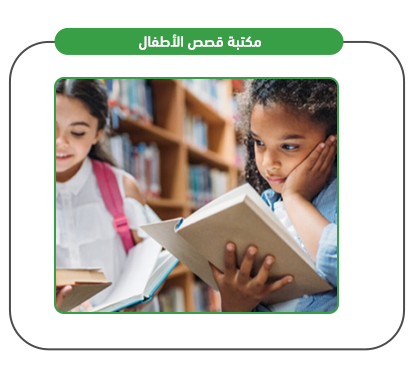The feasibility study for a children’s story library project with an investment of $50,000 depends on establishing a kiosk specialized in selling colorful books and children’s stories suitable for all age groups, represented by books for young Muslims for age groups, stories of adventures and wonders of the world, stories of prophets and personalities of Islamic history, stories of anecdotes and riddles, science fiction stories, innovations, periodic issues of Mickey and Donald Duck magazines and other famous colorful story series, bedtime stories, coloring books, teaching letters and numbers, child-rearing books, cut-and-stick drawings, posters of cartoon characters, and watercolor drawings.

The project targets children from one to eight years old, offering them a wide range of educational, cultural, and entertainment resources appropriate to their age group. The project is dedicated to providing religious and historical books, skill development books, arts books, and zoology books to develop children’s mental and sensory abilities, as well as various skills such as coloring, reading, and writing. It also encourages children to read, research, and explore, and encourages creativity and a love of reading.A children’s storybook library project is considered a new and unique profitable project. In addition to the financial profit you will gain by establishing such a project, you can achieve a great service to society by contributing to the education and culture of children at this age (from one to eight years old) and developing their mental skills. By providing this service through professional sellers, you will gain a high competitive advantage.



Providing the most enjoyable types of stories for children
Having a management team that is highly interested in the project
Communicating well with customers and understanding their needs
Organization and sophistication in the process of displaying and arranging stories
Paying attention to general cleaning of the place, both inside and out
Expanding children’s reading comprehension
Facilitating children’s access to information
Gaining new interests
Preparing children to interact with sound social institutions
Providing information sources appropriate to the child’s needs, desires, and interests
Developing the child’s social awareness and helping them lead a healthy social life
Uncovering the child’s true inclinations, latent aptitudes, and effective abilities.
Executive summary
Study project services/products
Market Size Analysis
Risk Assessment
Technical study
Financial study
Organizational and administrative study

Service sector in GCC countries
According to the macroeconomic theory of sectors, the economy is divided into three main and large sectors: the first; – is the sector that is based on collecting raw materials and includes mining companies, timber companies, oil exploration companies, in addition to agricultural and fishing industries. The second sector; is the sector that depends on goods and their sale, such as: (car manufacturing, furniture, clothing trade… etc.). As for the third sector, known as the “services” sector; it is the sector responsible for providing and producing services, essentially relying on intangible things, such as: entertainment, health care, transportation, hospitality, restaurants, etc. This theory believes that the more advanced countries are, the more their economies are based on the third sector, unlike primitive countries, which rely mostly on the first sector (the United States of America, for example, the service sector constitutes 85% of its economy).
Kingdom of Saudi Arabia:
The State of Qatar:
Kuwait:
United Arab Emirates:
Sultanate of Oman:
Global Service Sector
The service sector is the major contributor to the world’s gross product; It alone accounts for more than three fifths of this output. The sector does not rely on the production of tangible goods such as automobile and furniture, but rather on the provision of intangible services such as banking, medical care, transportation, hospitality, leisure, etc. The value of the sector market was estimated in 2020 at USD 10,814.49 billion and rose to USD 11,780.11 billion in 2021. The market achieved a CAGR of 8.9%. After recovering from the effects of the coronavirus pandemic, global market experts expect the sector’s market to reach US $ 15683.84 billion by 2025, bringing the market to a CAGR of 7% in the coming years.
